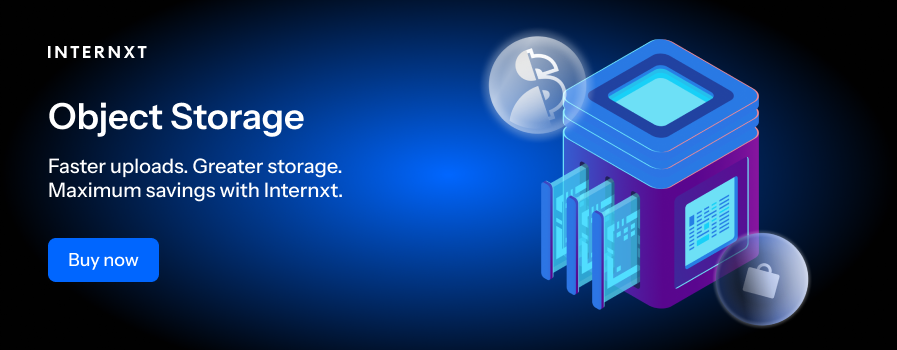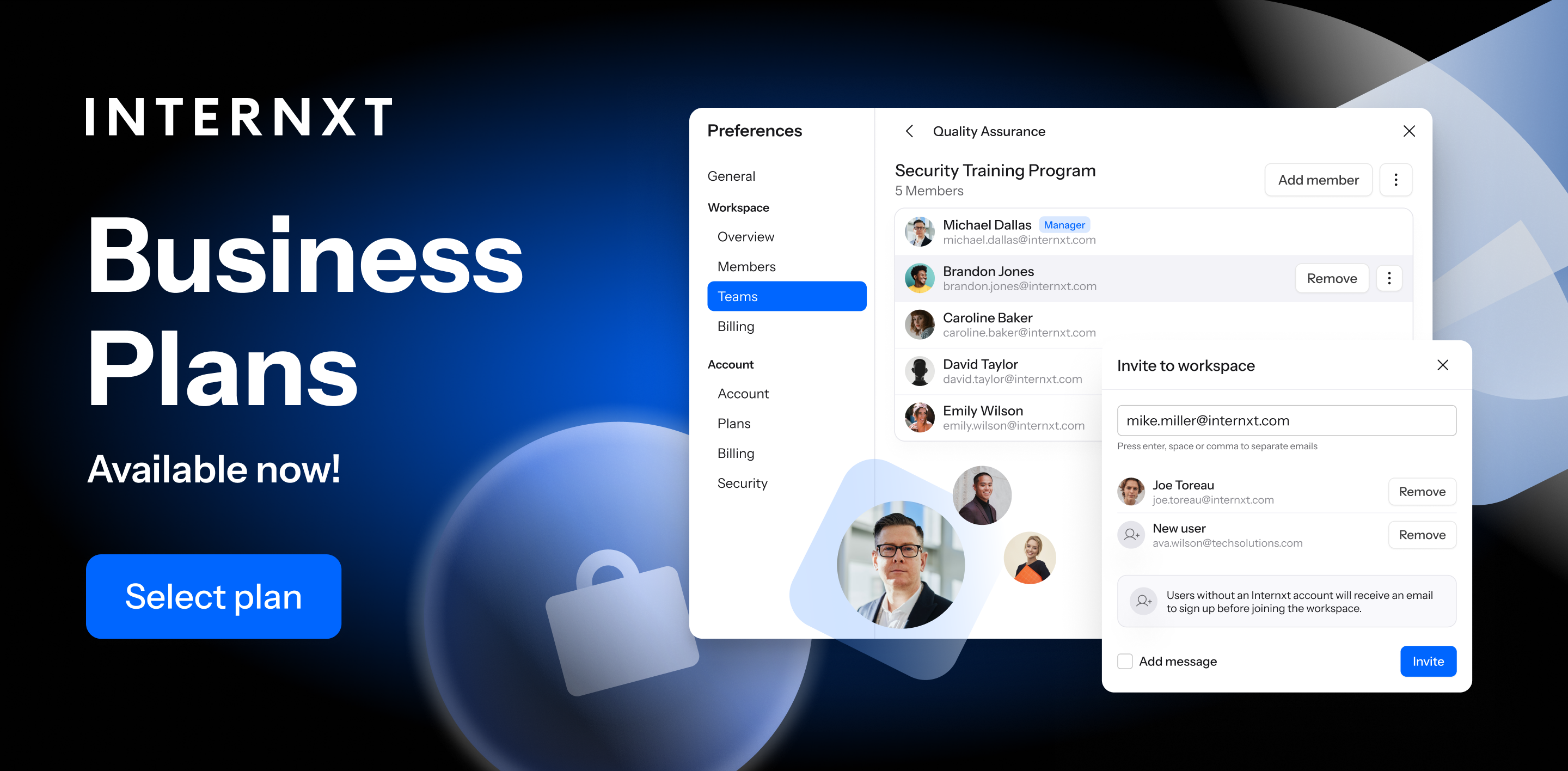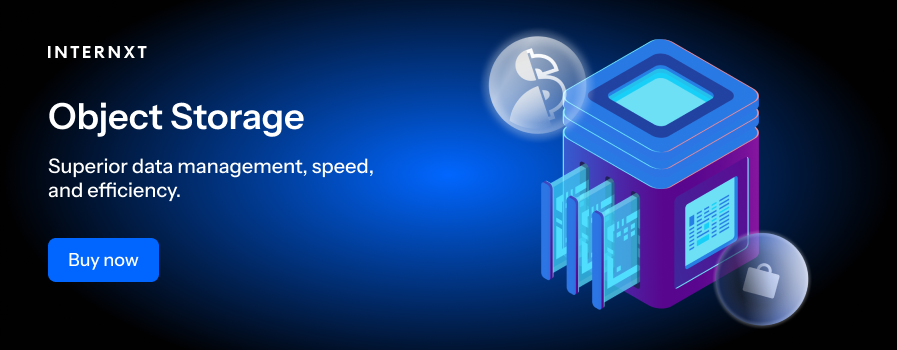What Is Cloud Management and Why Is It Important?

Despite advances in technology, many businesses still struggle to effectively manage data in a cost-effective, secure, and manageable way.
Cloud storage is becoming the go-to method for companies to store data, with 94% of major companies worldwide utilizing cloud computing. Corporate data also makes up 60% of data stored in the cloud.
So as demands continue to grow, and compliance and data protection laws become more stringent, how can businesses effectively manage their cloud needs?
By utilizing cloud management and cloud management platforms, businesses can take a comprehensive approach to turn complex cloud infrastructures into valuable assets.
To make things easier, we will discover more about cloud management throughout this article and different cloud platforms to confidently meet your data management needs.
Table of contents
- Cloud management definition
- What is the role of cloud management?
- Components of cloud management
- Challenges of cloud management to consider
- Cloud management best practices
- Related products to cloud management
Cloud management definition
Cloud management is the control of cloud computing resources by overseeing and controlling a cloud computer infrastructure and services.
Cloud management covers public, private, and hybrid cloud environments, and with the right cloud management platforms, IT administrators can achieve greater data control and adapt to changes as needed.
It’s important to note that cloud management and cloud computing are distinct concepts.
Cloud computing is related to servers, storage, databases, networking, software and analytics over the Inernet, (what we know as the cloud). Cloud computing lets organizations access these resources without needing to manage the cloud infrastructure.
When we talk about cloud management, we’re referring to the tools, strategies, and practices for monitoring and controlling cloud computing resources. With cloud management platforms, you can ensure that your resources, security, and performance are used effectively and efficiently.
What is the role of cloud management?
Cloud management is the only feasible option to manage thousands of servers and apps in the cloud, as managing these without a cloud management platform is impossible. Here are some of the benefits of cloud management:

- Increased visibility: Keep track of how and what resources are being uses to help identify optimal balance for your cloud capacity.
- Centralization: One of the benefits of cloud management platforms is the ability to integrate different tools, systems, apps, and more, resulting in a management system that is secure, compliant with laws, and cost-effective.
- Smart spending: You can get detailed reports from cloud management tools to gain insights on usage, view your current budget, and plan for future spending.
- Sustainability: An additional benefit of cloud management is it helps reduce wasted resources, and lowers the energy consumption of your cloud infrastructure.
Components of cloud management
Cloud management tools provide you with strategies to oversee cloud-based applications so your team can make decisions that benefit your company to keep cloud costs down and improve business performance.
Let’s take a look at some common features of cloud management.
Cost management
Cloud management doesn’t have to be expensive, although expenses will rise significantly if not managed properly. By monitoring usage, analyzing spending, and using cost optimization tools such as VMware to monitor budget, security, and performance, you can easily manage costs and control your cloud management budget.
Resource allocation
So resources are well-spent, cloud management reports and forecasts what resources are being used. Viewing how resources are allocated can prevent unexpected costs and minimize waste so workloads are managed efficiently.
Security
Data security also aligns with cost-effectiveness because without state-of-the-art security, businesses are at risk of unauthorized access, data leaks, and breaches that could result in hundreds of thousands in fines.
Cloud management security requires:
- Encryption
- Identity and access management
- Updated software
- Regular security audits
Your team's cybersecurity experts should always stay updated with the latest cybersecurity threats and adapt to new security protocols to protect your cloud platform and business.
Compliance
Proper cloud management can help organizations with data architecture, compliance, and auditing to demonstrate that a company meets the required regulations to protect sensitive information. Regulations vary depending on location, but common compliance bodies are:

Making your business compliant often involves maintaining accurate records, conducting audits, and implementing data protecti
on strategies. This will protect your business finances and reduce legal issues and penalties.
Automation
Implementing automation tools helps increase the efficiency of cloud management platforms by handling tasks such as scaling resources, monitoring performance, and deploying updates. Automation tools help monitor and log events in the cloud to minimize errors and increase business performance.
Challenges of cloud management to consider
Some organizations may struggle to manage the complexity of cloud architecture and worry about properly implementing their cloud strategies. Understanding these complexities and challenges will make managing your cloud environments easier, allowing you to migrate to the cloud confidently.
Diverse environments
Modern technology often requires multiple services for to run effectively, and cloud management requires a mixture of platforms and APIs that can be difficult for systems to run efficiently. Modern IT environments involve private, hybrid or multi-cloud environments that can be difficult to manage.
Cloud sprawl
With so many tools and technologies, things can start to lose control and you begin to lose track of your cloud resources. Cloud sprawling can cause resources to multiply and become difficult to manage, resulting in higher costs and security risks.
Cost
Although cloud environments can be cost-effective, without proper budget monitoring, businesses could face unexpected charges from overprovisioned resources. There is also the issue of estimating these expenses; accurately calculating the cost of a service means gathering information from various sources that businesses must account for.
Security
Cloud security is one of the most crucial features that must be considered, and managing how to manage access, protect data and secure cloud environments against external cyberattacks or even internal threats is a constant challenge.
Skill gaps
Finding the cybersecurity expert with cloud management skills can also be a challenge for organizations. The cybersecurity job market has a skills shortage of 4 million cybersecurity experts, and with the cost of data breaches rising each year, companies need more qualified cybersecurity professionals.

Cloud management best practices
Managing your public, hybrid, or multi-cloud environment goes beyond technology and tools, you will also need a well-thought-out cloud management strategy that includes:
- Best processes
- Technologies
- Skill sets
A cloud management strategy will vary depending on your business needs, but here are some strategies to help you get started.
Define objectives: Defining clear objectives provides a framework for decision-making, resource allocation, and performance measurement. Your objectives should relate to your broader business goals to gain the most value, for example, reducing costs by 20% over the next year with effective resource allocation.
Security: Implement as many security measures as possible, use zero-trust policies to limit access to sensitive information, Multi-Factor Authentication, and monitor account activity. Keep your security policies up to date and documented to help pass security audits.
Manage costs: Find tools that can help you monitor spending and identify inefficiencies so you can adjust resource allocation and reduce costs. Reserved instances can also help save money in the long term.
Use multi and hybrid cloud: Avoid vendor lock-in with distributed workloads across different cloud providers.
Use agile methods: Agile management will help you monitor storage capacity, usage, costs, and security.
Review and update policies: Cloud environments are susceptible to change, so your policies need to reflect these changes and be updated in tandem with technology changes, business needs, and security protocols.
Create a disaster recovery plan: Develop and maintain a recovery plan in case of server outages. Back up files consistently and test your plan and adapt based on them so they remain effective.
These serve as a guide to help strategize your cloud management strategy; any additions or changes will have to add value to your business's cloud needs.

Related products to cloud management
Choosing a cloud provider can be challenging, and cloud management requires dedication, skills, and time to set up. Another way to interact with the cloud is Internxt object storage, which provides an API for developers to create, retrieve, update, and delete objects stored in the system.
Internxt S3 is a scalable and affordable alternative to AWS, Azure, and Google Cloud with a commitment to sustainability. Its pay-as-you-go model costs €7/TB/month and has zero data transfer fees.
Whichever cloud management platform you choose, research your options thoroughly to get the tools you need to set up your business for success as you start your journey into the wonderful world of the cloud!

